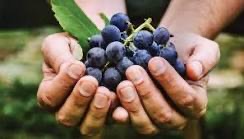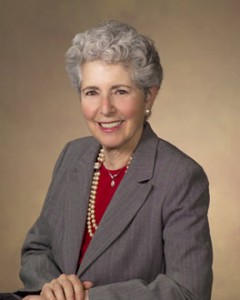Organic Wine Comes of Age
Organic Wine Comes of Age
by Susan Weiner, Energy Times
Everyone seems to like the “organic” label when it comes to raisins and lettuce, but the mere mention of a well-balanced organic wine can silence even the most vociferous vinophile. Suspicious of the sweet taste and short shelf life of wines from the 1980s and 90s, the stigma associated with early organic wine still lingers, despite award-winning vintages routinely produced by environmentally friendly vintners.
 “Things change slowly. Early perceptions don’t die quickly, especially the old hippie syndrome,” recalls Scott Smith, founder and winemaker at Four Chimneys Organic Winery in Himrod, New York.
“Things change slowly. Early perceptions don’t die quickly, especially the old hippie syndrome,” recalls Scott Smith, founder and winemaker at Four Chimneys Organic Winery in Himrod, New York.
“As the author of some of the early organic wines, I would say they were often ready to drink at bottling and be consumed within the first year. We didn’t have an aging program and an extensive barrel program that are typical today.” Wines mellow and become softer as they age, so barrels—which impart flavors such as vanilla and butter—have a profound effect on the resulting wine, affecting color, flavor, texture and tannin profile.
With two different certifications in the United States, wine labeled “Made From Organic Grapes” still contains small amounts of sulfur to help stabilize the wine and prevent it from oxidizing. An Organic label, according to the USDA’s National Organic Program rules, contains no added sulfites, which can trigger headaches and other allergic reactions. “The original problem came in when wineries wanted to be sure their wines didn’t lose character sitting on a retail shelf somewhere,” explains Smith. “To call a wine ‘organic wine’ it must not contain any detectable sulfites. Some reds I have tried have been quite good without sulfur dioxide added.”
Healthful and Red
Red wines come from an assortment of 50 grape varietals ranging from reddish to deep purple, and even blue on the color scale. During the fermentation process, the grape skins determine the hue of the wine. The skins also help create the “body-type,” which refers to the mouth-feel and tannin structure of the wine; the higher the tannin level, the more “pucker power,” as in a medium-bodied Merlot or a full-bodied Cabernet Franc. Higher-tannin wines also contain higher levels of resveratrol and polyphenols, antioxidants with myriad health benefits.
In addition to raising good (HDL) cholesterol levels, studies indicate that moderate amounts of wine prevent rogue molecules known as free radicals from causing damage on a cellular level. This helps improve cardiovascular health, reduce tumor incidence and aid in the formation of nerve cells, which may be helpful in the treatment of neurological diseases such as Alzheimer’s and Parkinson’s.
A growing body of worldwide research on the benefits of wine have prompted the World Health Organization, the US government and the American Heart Association to issue statements highlighting scientific findings that associate health benefits with moderate alcohol consumption, particularly red wine.
Compared with their conventionally grown counterparts, organic red wines have been found to have up to 30% higher levels of polyphenols, resveratrol and antioxidant activity. Contamination with mycotoxin, a toxin produced by a fungus, was up to three times higher in conventional varieties compared with organic wine, since the lower levels of nitrogen and higher levels of antioxidants in organic grapes tend to reduce fungal growth and protect fruit from mycotoxin-forming fungi (Journal of Wine Research 12/03).
When it comes to red wine, researchers at the University of California at Davis have concluded that the flavonoid favorite—a type of polyphenol—is Cabernet Sauvignon, followed closely by Petit Syrah and Pinot Noir. Sipped from an oval-shaped glass with adequate surface area for allowing the wine to breathe, one four-ounce glass of red wine a day for women and two glasses for men, served at room temperature, is a good bet for an overall health boost. (Research has shown that excessive alcohol consumption, including that of wine, may contribute to cancer; the American Cancer Society does not endorse alcohol intake and notes that anyone who has or had cancer should not drink.)
Pesticide-Free Whites
It’s one of the most vexing problems facing connoisseurs of food and drink: Which white wine to serve with what meat? Since food and wine pairing is a highly subjective process, forget the old rules—red wine with red meat and white wine with fish and poultry. Instead, consider the complexities of today’s multi-ethnic foods and opt for a white wine that enhances the flavor of the meal without overpowering it. And, since grapes are among the most pesticide-laden produce, an organic white wine is simply a healthier choice.
White wine lovers have an array of full-flavored varietals to choose from, including Gewurztraminer, Pinot Grigio, Riesling, Chablis and Sauvignon Blanc, although Chardonnay remains far and away the leading varietal wine in the US for the last decade, reports the Wine Institute (www.wineinstitute.org). Though it lacks resveratrol, white wine may be just as health-promoting as its red counterpart, offering similar cardio-protective benefits via its own strong antioxidants, tyrosol and hydroxytyrosol (also found in olive oil, a strong component of the heart-healthy Mediterranean diet). Moreover, a study from the University at Buffalo showed that regular consumption of white wine resulted in better lung health (American Thoracic Society, 2002).
As more people choose to protect themselves and the environment from pesticide exposure through increased organic purchases, organic wine sales exceeded $161 million in 2009, a 7.5% jump from 2008 sales. “During these economic times, people may not eat out as much, but more people are preparing meals at home featuring organic wine and other organic ingredients,” says Barbara Haumann, spokesperson for the Organic Trade Association (OTA), a business association for the North American organic industry (www.ota.com).
Beyond Organic
Some wine producers take their farming process a step beyond organics, opting for a practice known as biodynamic farming, a set of techniques popular in Europe, notably France, for decades.
Working with lunar and other natural cycles, biodynamic farmers use natural predators instead of pesticides, use compost for fertilizer, save seeds and study the soil to determine which varietals will best express the vineyards. In contrast to organic wines, which can contain only 10 parts per million of naturally occurring sulfites, biodynamic wines may include added sulfites of up to 100 ppm.
“Biodynamics is not that far removed from organics. What matters more than anything is the ethical commitment to farming ecologically,” says Mike Biltonen, vice president of farm operations at Red Jacket Orchards in Geneva, New York. Trained in transitioning farming towards greater sustainability, Biltonen holds a masters degree in pomology, the study of fruit trees, from Cornell University. “Organics is better for the planet, it’s better for the people who grow it. There’s an amazing amount of evidence that it’s more nutritious. That is based on the fact that when you apply chemicals, the plant doesn’t have to rely on its natural defenses.”
In tastings, organic wines consistently fare better than non-organic, yet organic wines are often overlooked on store shelves, reports a wine study from UCLA (Business & Society March 2010). “A lot of vineyards are organic, but they choose not to call themselves organic because some wine consumers consider it not as good,” says Ronnie Cummins, international director of the Organic Consumer’s Association, a public interest organization (www.organicconsumers.org). Organic wine production, predicts Cummins, will continue to rise. “Made from organic grapes or straight organic wine is going to become the wave of the future.”


